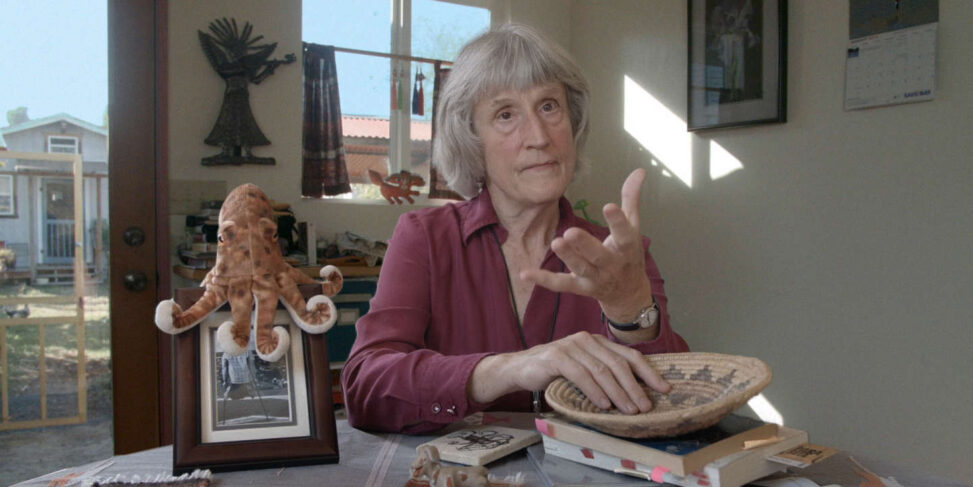Cyborgs: A Myth of Political Identity
I want to conclude with a myth about identity and boundaries which might inform late twentieth-century political imaginations (Plate 1). I am indebted in this story to writers like Joanna Russ, Samuel R. Delany, John Varley, James Tiptree, Jr, Octavia Butler, Monique Wittig, and Vonda Mclntyre. These are our story-tellers exploring what it means to be embodied in high-tech worlds. They are theorists for cyborgs. Exploring conceptions of bodily boundaries and social order, the anthropologist Mary Douglas (1966, 1970) should be credited with helping us to consciousness about how fundamental body imagery is to world view, and so to political language. French feminists like Luce Irigaray and Monique Wittig, for all their differences, know how to write the body; how to weave eroticism, cosmology, and politics from imagery of embodiment, and especially for Wittig, from imagery of fragmentation and reconstitution of bodies. American radical feminists like Susan Griffnn, Audre Lorde, and Adrienne Rich have profoundly affected our political imaginations—and perhaps restricted too much what we allow as a friendly body and political language. They insist on the organic, opposing it to the technological. But their symbolic systems and the related positions of ecofeminism and feminist paganism, replete with organicisms, can only be understood in Sandoval’s terms as oppositional ideologies fitting the late twentieth century. They would simply bewilder anyone not preoccupied with the machines and consciousness of late capitalism. In that sense they are part of the cyborg world. But there are also great riches for feminists in explicitly embracing the possibilities inherent in the breakdown of clean distinctions between organism and machine and similar distinctions structuring the Western self. It is the simultaneity of breakdowns that cracks the matrices of domination and opens geometric possibilities. What might be learned from personal and political ‘technological’ pollution? I look briefly at two overlapping groups of texts for their insight into the construction of a potentially helpful cyborg myth: constructions of women of colour and monstrous selves in feminist science fiction.
Earlier I suggested that ‘women of colour’ might be understood as a cyborg identity, a potent subjectivity synthesized from fusions of outsider identities and in the complex political-historical layerings of her ‘biomythography’, Zami (Lorde, 1982; King, 1987a, 1987b). There are material and cultural grids mapping this potential, Audre Lorde (1984) captures the tone in the title of her Sister Outsider. In my political myth, Sister Outsider is the offshore woman, whom US workers, female and feminized, are supposed to regard as the enemy preventing their solidarity, threatening their security. Onshore, inside the boundary of the United States, Sister Outsider is a potential amidst the races and ethnic identities of women manipulated for division, competition, and exploitation in the same industries. ‘Women of colour’ are the preferred labour force for the science-based industries, the real women for whom the world-wide sexual market, labour market, and politics of reproduction kaleidoscope into daily life. Young Korean women hired in the sex industry and in electronics assembly are recruited from high schools, educated for the integrated circuit. Literacy, especially in English, distinguishes the ‘cheap’ female labour so attractive to the multinationals.
Contrary to orientalist stereotypes of the ‘oral primitive’, literacy is a special mark of women of colour, acquired by US black women as well as men through a history of risking death to learn and to teach reading and writing. Writing has a special significance for all colonized groups. Writing has been crucial to the Western myth of the distinction between oral and written cultures, primitive and civilized mentalities, and more recently to the erosion of that distinction in ‘postmodernist’ theories attacking the phallogocentrism of the West, with its worship of the monotheistic, phallic, authoritative, and singular work, the unique and perfect name. Contests for the meanings of writing are a major form of contemporary political struggle. Releasing the play of writing is deadly serious. The poetry and stories of US women of colour are repeatedly about writing, about access to the power to signify; but this time that power must be neither phallic nor innocent. Cyborg writing must not be about the Fall, the imagination of a once-upon-a-time wholeness before language, before writing, before Man. Cyborg writing is about the power to survive, not on the basis of original innocence, but on the basis of seizing the tools to mark the world that marked them as other.
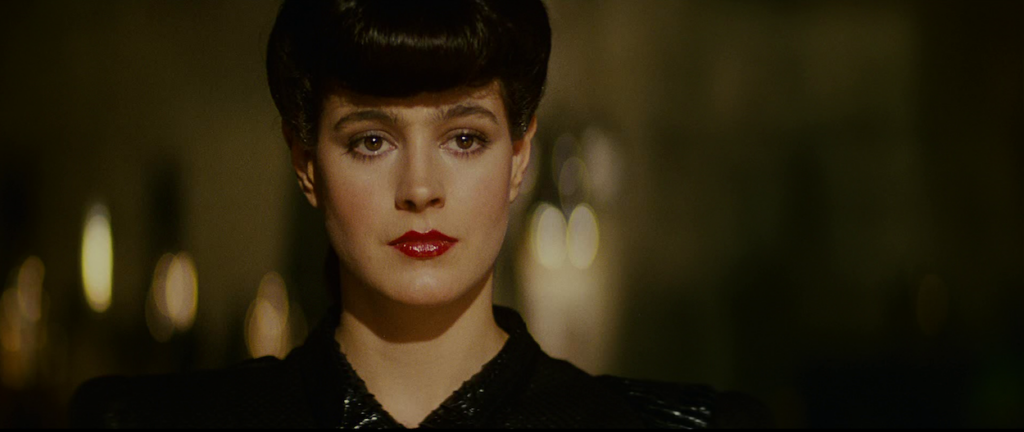
The tools are often stories, retold stories, versions that reverse and displace the hierarchical dualisms of naturalized identities. In retelling origin stories, cyborg authors subvert the central myths of origin of Western culture. We have all been colonized by those origin myths, with their longing for fulfilment in apocalypse. The phallogocentric origin stories most crucial for feminist cyborgs are built into the literal technologies—technologies that write the world, biotechnology and microelectronics—that have recently textualized our bodies as code problems on the grid of C3I. Feminist cyborg stories have the task of recoding communication and intelligence to subvert command and control.
Figuratively and literally, language politics pervade the struggles of women of colour; and stories about language have a special power in the rich contemporary writing by US women of colour. For example, retellings of the story of the indigenous woman Malinche, mother of the mestizo ‘bastard’ race of the new world, master of languages, and mistress of Cortes, carry special meaning for Chicana constructions of identity. Cherrie Moraga (1983) in Loving in the War Years explores the themes of identity when one never possessed the original language, never told the original story, never resided in the harmony of legitimate heterosexuality in the garden of culture, and so cannot base identity on a myth or a fall from innocence and right to natural names, mother’s or father’s. Moraga’s writing, her superb literacy, is presented in her poetry as the same kind of violation as Malinche’s mastery of the conqueror’s language—a violation, an illegitimate production, that allows survival. Moraga’s language is not ‘whole’; it is self-consciously spliced, a chimera of English and Spanish, both conqueror’s languages. But it is this chimeric monster, without claim to an original language before violation, that crafts the erode, competent, potent identities of women of colour. Sister Outsider hints at the possibility of world survival not because of her innocence, but because of her ability to live on the boundaries, to write without the founding myth of original wholeness, with its inescapable apocalypse of final return to a deathly oneness that Man has imagined to be the innocent and all-powerful Mother, freed at the End from another spiral of appropriation by her son. Writing marks Moraga’s body, affirms it as the body of a woman of colour, against the possibility of passing into the unmarked category of the Anglo father or into the orientalist myth of ‘original illiteracy’ of a mother that never was. Malinche was mother here, not Eve before eating the forbidden fruit. Writing affirms Sister Outsider, not the Woman-before-the-Fall-into-Writing needed by the phallogocentric Family of Man.
Writing is pre-eminently the technology of cyborgs, etched surfaces of the late twentieth century. Cyborg politics is the struggle for language and the struggle against perfect communication, against the one code that translates all meaning perfectly, the central dogma of phallogocentrism. That is why cyborg politics insist on noise and advocate pollution, rejoicing in the illegitimate fusions of animal and machine. These are the couplings which make Man and Woman so problematic, subverting the structure of desire, the force imagined to generate language and gender, and so subverting the structure and modes of reproduction of ‘Western’ identity, of nature and culture, of mirror and eye, slave and master, body and mind. ‘We’ did not originally choose to be cyborgs, but choice grounds a liberal politics and epistemology that imagines the reproduction of individuals before the wider replications of ‘texts’.
From the perspective of cyborgs, freed of the need to ground politics in ‘our’ privileged position of the oppression that incorporates all other dominations, the innocence of the merely violated, the ground of those closer to nature, we can see powerful possibilities. Feminisms and Marxisms have run aground on Western epistemological imperatives to construct a revolutionary subject from the perspective of a hierarchy of oppressions and/or a latent position of moral superiority, innocence, and greater closeness to nature. With no available original dream of a common language or original symbiosis promising protection from hostile ‘masculine’ separation, but written into the play of a text that has no finally privileged reading or salvation history, to recognize ‘oneself’ as fully implicated in the world, frees us of the need to root politics in identification, vanguard parties, purity, and mothering. Stripped of identity, the bastard race teaches about the power of the margins and the importance of a mother like Malinche. Women of colour have transformed her from the evil mother of masculinist fear into the originally literate mother who teaches survival.
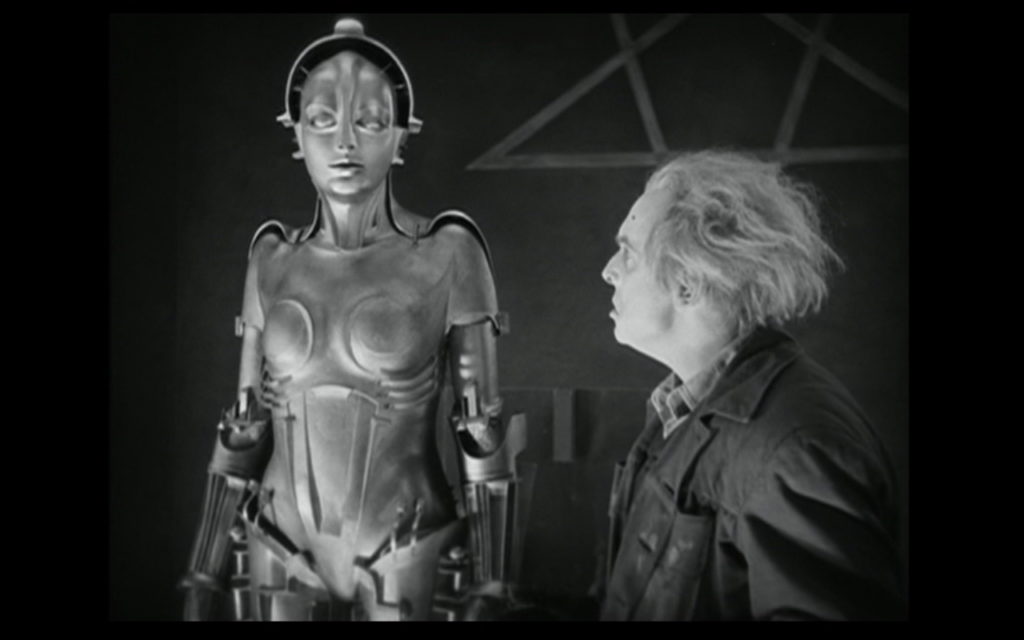
This is not just literary deconstruction, but liminal transformation. Every, story that begins with original innocence and privileges the return to wholeness imagines the drama of life to be individuation, separation, the birth of the self, the tragedy of autonomy, the fall into writing, alienation; that is, war, tempered by imaginary respite in the bosom of the Other. These plots are ruled by a reproductive politics—rebirth without flaw, perfection, abstraction. In this plot women are imagined either better or worse off, but all agree they have less selfhood, weaker individuation, more fusion to the oral, to Mother, less at stake in masculine autonomy. But there is another route to having less at stake in masculine autonomy, a route that does not pass through Woman, Primitive, Zero, the Mirror Stage and its imaginary. It passes through women and other present-tense, illegitimate cyborgs, not of Woman born, who refuse the ideological resources of victimization so as to have a real life. These cyborgs are the people who refuse to disappear on cue, no matter how many times a ‘western’ commentator remarks on the sad passing of another primitive, another organic group done in by ‘Western’ technology, by writing. These real-life cyborgs (for example, the Southeast Asian village women workers in Japanese and US electronics firms described by Aihwa Ong) are actively rewriting the texts of their bodies and societies. Survival is the stakes in this play of readings.
To recapitulate, certain dualisms have been persistent in Western traditions; they have all been systemic to the logics and practices of domination of women, people of colour, nature, workers, animals—in short, domination of all constituted as others, whose task is to mirror the self. Chief among these troubling dualisms are self/other, mind/body, culture/nature, male/female, civilized/primitive, reality/appearance, whole/part, agent/resource, maker/ made, active/passive, right/wrong, truth/illusion, total/partial, God/man. The self is the One who is not dominated, who knows that by the service of the other, the other is the one who holds the future, who knows that by the experience of domination, which gives the lie to the autonomy of the self. To be One is to be autonomous, to be powerful, to be God; but to be One is to be an illusion, and so to be involved in a dialectic of apocalypse with the other. Yet to be other is to be multiple, without clear boundary, frayed, insubstantial. One is too few, but two are too many.
High-tech culture challenges these dualisms in intriguing ways. It is not clear who makes and who is made in the relation between human and machine. It is not clear what is mind and what body in machines that resolve into coding practices. In so far as we know ourselves in both formal discourse (for example, biology) and in daily practice (for example, the homework economy in the integrated circuit), we find ourselves to be cyborgs, hybrids, mosaics, chimeras. Biological organisms have become biotic systems, communications devices like others. There is no fundamental, ontological separation in our formal knowledge of machine and organism, of technical and organic. The replicant Rachel in the Ridley Scott film Blade Runner stands as the image of a cyborg culture’s fear, love, and confusion.
One consequence is that our sense of connection to our tools is heightened. The trance state experienced by many computer users has become a staple of science-fiction film and cultural jokes. Perhaps paraplegics and other severely handicapped people can (and sometimes do) have the most intense experiences of complex hybridization with other communication devices. Anne McCaffrey’s pre-feminist The Ship Who Sang (1969) explored the consciousness of a cyborg, hybrid of girl’s brain and complex machinery, formed after the birth of a severely handicapped child. Gender, sexuality, embodiment, skill: all were reconstituted in the story. Why should our bodies end at the skin, or include at best other beings encapsulated by skin? From the seventeenth century till now, machines could be animated—given ghostly souls to make them speak or move or to account for their orderly development and mental capacities. Or organisms could be mechanized—reduced to body understood as resource of mind. These machine/ organism relationships are obsolete, unnecessary. For us, in imagination and in other practice, machines can be prosthetic devices, intimate components, friendly selves. We don’t need organic holism to give impermeable wholeness, the total woman and her feminist variants (mutants?). Let me conclude this point by a very partial reading of the logic of the cyborg monsters of my second group of texts, feminist science fiction.
The cyborgs populating feminist science fiction make very problematic the statuses of man or woman, human, artefact, member of a race, individual entity, or body. Katie King clarifies how pleasure in reading these fictions is not largely based on identification. Students facing Joanna Russ for the first time, students who have learned to take modernist writers like James Joyce or Virginia Woolf without flinching, do not know what to make of The Adventures of Alyx or The Female Man, where characters refuse the reader’s search for innocent wholeness while granting the wish for heroic quests, exuberant eroticism, and serious politics. The Female Man is the story of four versions of one genotype, all of whom meet, but even taken together do not make a whole, resolve the dilemmas of violent moral action, or remove the growing scandal of gender. The feminist science fiction of Samuel R. Delany, especially Tales of Neveyon, mocks stories of origin by redoing the neolithic revolution, replaying the founding moves of Western civilization to subvert their plausibility. James Tiptree, Jr, an author whose fiction was regarded as particularly manly until her ‘true’ gender was revealed, tells tales of reproduction based on non-mammalian technologies like alternation of generations of male brood pouches and male nurturing. John Varley constructs a supreme cyborg in his arch-feminist exploration of Gaea, a mad goddess-planet-trickster-old woman-technological device on whose surface an extraordinary array of post-cyborg symbioses are spawned. Octavia Butler writes of an African sorceress pitting her powers of transformation against the genetic manipulations of her rival (Wild Seed), of time warps that bring a modern US black woman into slavery where her actions in relation to her white master-ancestor determine the possibility of her own birth (Kindred), and of the illegitimate insights into identity and community of an adopted cross-species child who came to know the enemy as self (Survivor). In Dawn (1987), the first instalment of a series called Xenogenesis, Butler tells the story of Lilith Iyapo, whose personal name recalls Adam’s first and repudiated wife and whose family name marks her status as the widow of the son of Nigerian immigrants to the US. A black woman and a mother whose child is dead, Lilith mediates the transformation of humanity through genetic exchange with extra-terrestrial lovers/rescuers/destroyers/genetic engineers, who reform earth’s habitats after the nuclear holocaust and coerce surviving humans into intimate fusion with them. It is a novel that interrogates reproductive, linguistic, and nuclear politics in a mythic field structured by late twentieth-century race and gender.
Because it is particularly rich in boundary transgressions, Vonda McIntyre’s Superluminal can close this truncated catalogue of promising and dangerous monsters who help redefine the pleasures and politics of embodiment and feminist writing. In a fiction where no character is ‘simply’ human, human status is highly problematic. Orca, a genetically altered diver, can speak with killer whales and survive deep ocean conditions, but she longs to explore space as a pilot, necessitating bionic implants jeopardizing her kinship with the divers and cetaceans. Transformations are effected by virus vectors carrying a new developmental code, by transplant surgery, by implants of microelectronic devices, by analogue doubles, and other means. Lacnea becomes a pilot by accepting a heart implant and a host of other alterations allowing survival in transit at speeds exceeding that of light. Radu Dracul survives a virus-caused plague in his outerworld planet to find himself with a time sense that changes the boundaries of spatial perception for the whole species. All the characters explore the limits of language; the dream of communicating experience; and the necessity of limitation, partiality, and intimacy even in this world of protean transformation and connection. Superluminal stands also for the defining contradictions of a cyborg world in another sense; it embodies textually the intersection of feminist theory and colonial discourse in the science fiction I have alluded to in this chapter. This is a conjunction with a long history that many ‘First World’ feminists have tried to repress, including myself in my readings of Superluminal before being called to account by Zoe Sofoulis, whose different location in the world system’s informatics of domination made her acutely alert to the imperialist moment of all science fiction cultures, including women’s science fiction. From an Australian feminist sensitivity, Sofoulis remembered more readily McIntyre’s role as writer of the adventures of Captain Kirk and Spock in TV’s Star Trek series than her rewriting the romance in Superluminal.
Monsters have always defined the limits of community in Western imaginations. The Centaurs and Amazons of ancient Greece established the limits of the centred polls of the Greek male human by their disruption of marriage and boundary pollutions of the warrior with animality and woman. Unseparated twins and hermaphrodites were the confused human material in early modern France who grounded discourse on the natural and supernatural, medical and legal, portents and diseases—all crucial to establishing modern identity. The evolutionary and behavioral sciences of monkeys and apes have marked the multiple boundaries of late twentieth-century industrial identities. Cyborg monsters in feminist science fiction define quite different political possibilities and limits from those proposed by the mundane fiction of Man and Woman.
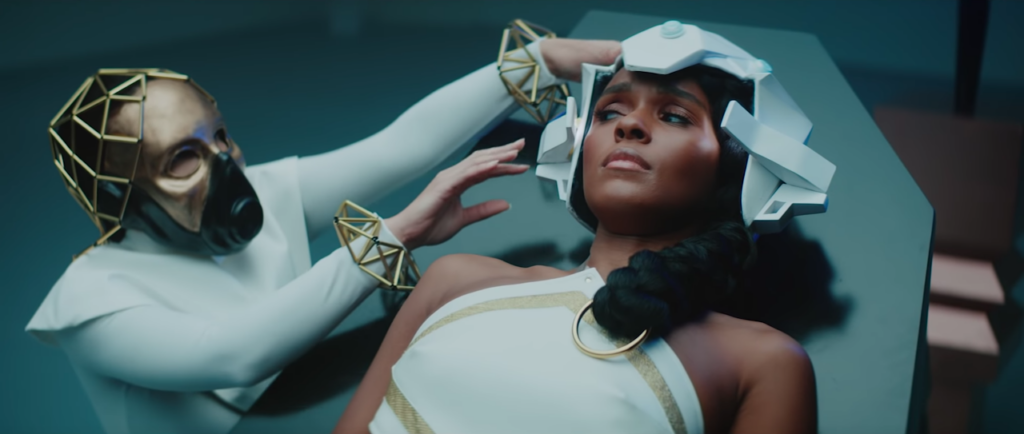
There are several consequences to taking seriously the imagery of cyborgs as other than our enemies. Our bodies, ourselves; bodies are maps of power and identity. Cyborgs are no exception. A cyborg body is not innocent; it was not born in a garden; it does not seek unitary identity and so generate antagonistic dualisms without end (or until the world ends); it takes irony for granted. One is too few, and two is only one possibility. Intense pleasure in skill, machine skill, ceases to be a sin, but an aspect of embodiment. The machine is not an it to be animated, worshipped, and dominated. The machine is us, our processes, an aspect of our embodiment. We can be responsible for machines; they do not dominate or threaten us. We are responsible for boundaries; we are they. Up till now (once upon a time), female embodiment seemed to be given, organic, necessary; and female embodiment seemed to mean skill in mothering and its metaphoric extensions. Only by being out of place could we take intense pleasure in machines, and then with excuses that this was organic activity after all, appropriate to females. Cyborgs might consider more seriously the partial, fluid, sometimes aspect of sex and sexual embodiment. Gender might not be global identity after all, even if it has profound historical breadth and depth.
The ideologically charged question of what counts as daily activity, as experience, can be approached by exploiting the cyborg image. Feminists have recently claimed that women are given to dailiness, that women more than men somehow sustain daily life, and so have a privileged epistemological position potentially. There is a compelling aspect to this claim, one that makes visible unvalued female activity and names it as the ground of life. But the ground of life? What about all the ignorance of women, all the exclusions and failures of knowledge and skill? What about men’s access to daily competence, to knowing how to build things, to take them apart, to play? What about other embodiments? Cyborg gender is a local possibility taking a global vengeance. Race, gender, and capital require a cyborg theory of wholes and parts. There is no drive in cyborgs to produce total theory, but there is an intimate experience of boundaries, their construction and deconstruction. There is a myth system waiting to become a political language to ground one way of looking at science and technology and challenging the informatics of domination—in order to act potently.
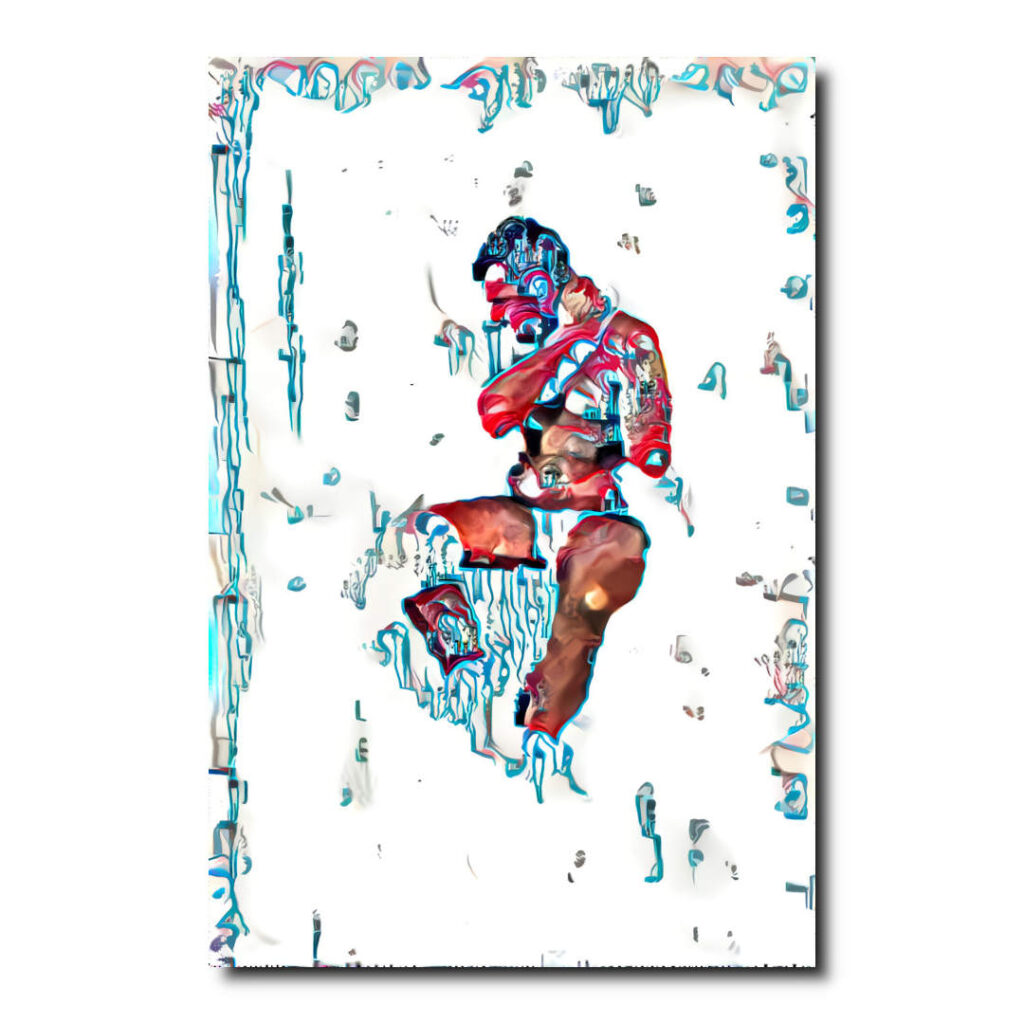
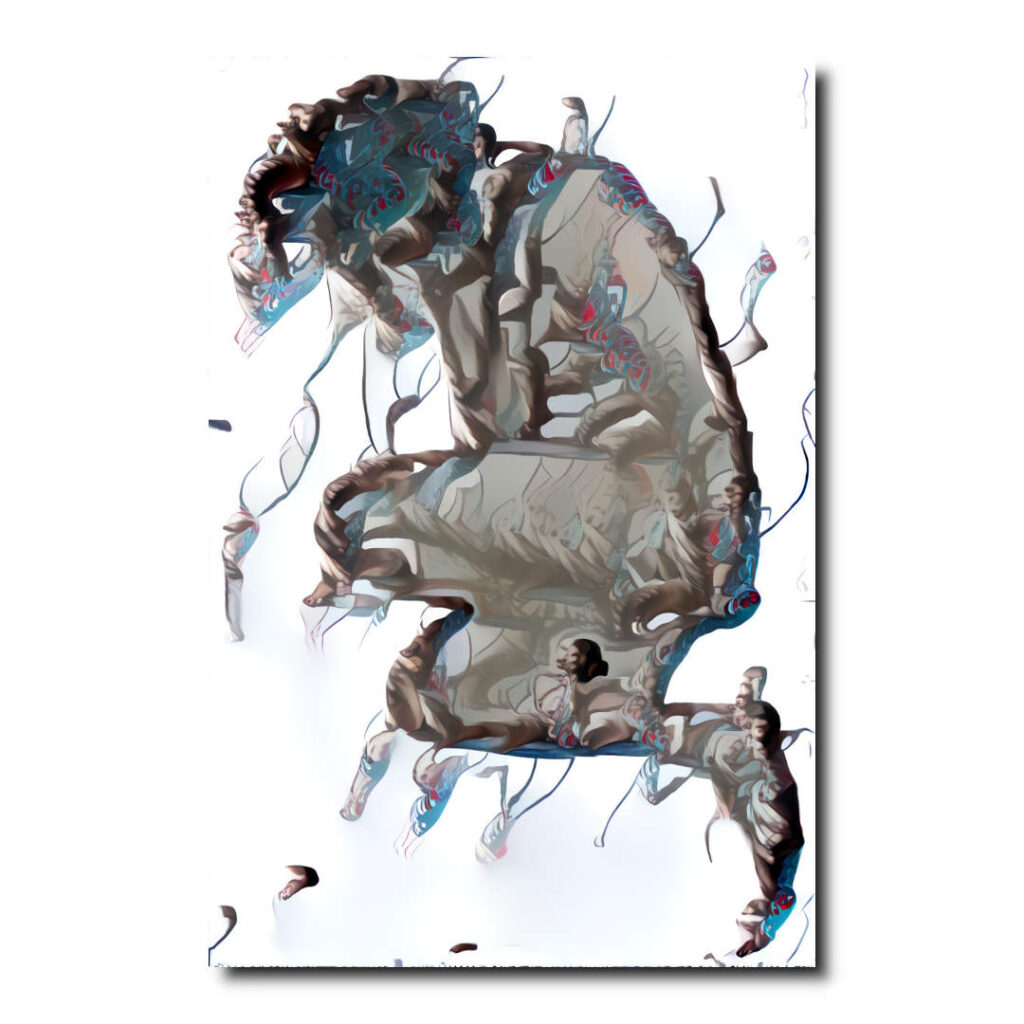
One last image organisms and organismic, holistic politics depend on metaphors of rebirth and invariably call on the resources of reproductive sex. I would suggest that cyborgs have more to do with regeneration and are suspicious of the reproductive matrix and of most birthing. For salamanders, regeneration after injury, such as the loss of a limb, involves regrowth of structure and restoration of function with the constant possibility of twinning or other odd topographical productions at the site of former injury. The regrown limb can be monstrous, duplicated, potent. We have all been injured, profoundly. We require regeneration, not rebirth, and the possibilities for our reconstitution include the utopian dream of the hope for a monstrous world without gender.
Cyborg imagery can help express two crucial arguments in this essay: first, the production of universal, totalizing theory is a major mistake that misses most of reality, probably always, but certainly now; and second, taking responsibility for the social relations of science and technology means refusing an anti-science metaphysics, a demonology of technology, and so means embracing the skillful task of reconstructing the boundaries of daily life, in partial connection with others, in communication with all of our parts. It is not just that science and technology are possible means of great human satisfaction, as well as a matrix of complex dominations. Cyborg imagery can suggest a way out of the maze of dualisms in which we have explained our bodies and our tools to ourselves. This is a dream not of a common language, but of a powerful infidel heteroglossia. It is an imagination of a feminist speaking in tongues to strike fear into the circuits of the supersavers of the new right. It means both building and destroying machines, identities, categories, relationships, space stories. Though both are bound in the spiral dance, I would rather be a cyborg than a goddess.
This post was automatically generated by the media-artwork „Meine Krake heißt Klothilde“ (Eng: My Kraken’s name is Klothilde) by Hidéo SNES.
TRANsMUTATION.online
Repost from The Anarchist Library | Autor*in: Donna Haraway | Routledge, 1991
